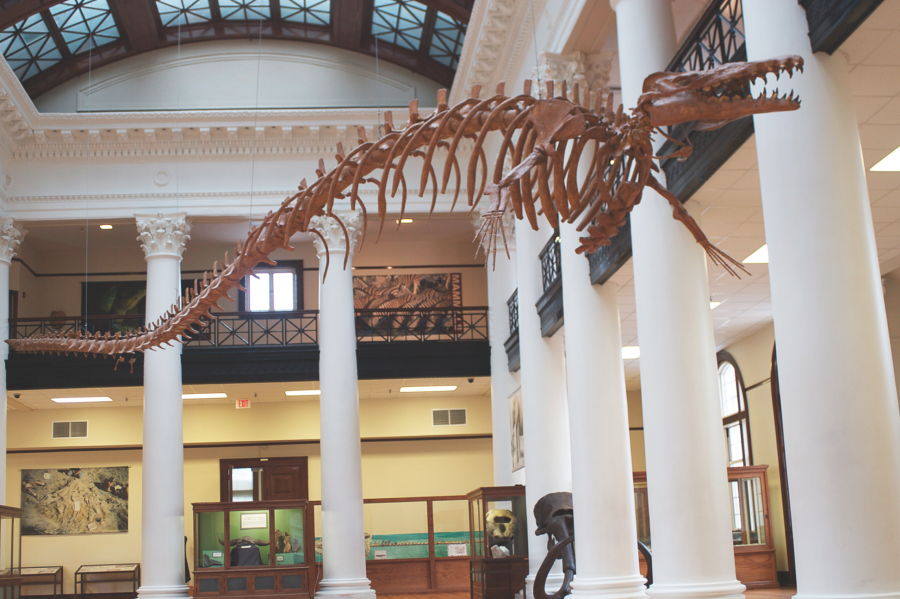The monumental stature of The University of Alabama’s towering structures assign a historical and museum-like quality to many campus buildings. Often lost in this shuffle of brick and mortar is the Alabama Museum of Natural History housed within the unimposing Smith Hall.
“For the most part, unless a student takes a class here, they have little idea about the museum,” director Randy Mecredy said. “I want students to know it’s more than just a building.”
Constructed in 1907 as a part of the geological survey of Alabama, the museum aims to represent the natural history of the state through a combination of research, education, outreach and active specimen collection, he said.
Acting on its nominal function, the museum displays rotating exhibits of specimens from the times of dinosaurs, coal and ice age. The collections are as varied as the replica Basilosaurus hanging from the ceiling to the Hodges meteorite, the only documented case of a meteorite striking a person.
“What we have on exhibit is only a fraction of what’s held in collection,” Mecredy said. “We try to create exhibits that are intriguing to a general audience, gives them a taste of science and makes them want to learn more.”
With a vast and ever-growing collection of artifacts in storage, some dating back to the museum’s founding, he said the selection process is rarely easy. He recalled their recent completion of a geology exhibit where they decided to pull from a few introductory native elements and minerals and branch into a few more elements while highlighting their applied and scientific significance.
“Otherwise, it’s just a rock,” Mecredy said. “You put some science behind it and some practical everyday use as well, and it gives some meaning to it.”
Considered an outreach unit within academic affairs, the museum has been tied to the University since its beginning. Today, Mecredy said, they support a variety of academic units on campus through teaching and instruction.
He cited the museum’s use by introductory geology classrooms and art classes who spend weeks finding inspiration from within the museum. Writing classes base their writings on exhibits, and a variety of other sciences make use of their resources. A majority of the museum’s staff also acts as adjunct professors on campus.
“When I became director six years ago, that was the one thing I implemented,” Mecredy said. “I wanted to be as closely embedded in the academic units as possible.”
Education and outreach director Amanda Espy-Brown said her personal goal was have every UA student visit the museum before they graduate. She said Smith Hall’s relatively inconspicuous exterior and minimal amount of parking has limited their public exposure to students and locals alike.
However, the museum has increased its efforts to provide programs and events geared specifically to college students, Brown said.
“Natural History with The Experts,” for example, invites experts from a variety of scientific fields to display their knowledge to guests for free before home football games. In the coming semester, the museum will host a college night, family night, ghost story themed “A Haunting at the Museum” night, and a Christmas open house.
Lanesha Childress, a sophomore majoring in art, had little idea a museum existed on campus until wandering into the hall on an exploratory walk with friends. Since her discovery, she began a work-study with the museum, working on Museum Mondays and Kids Corner, two light-hearted, experiment-filled programs for young children.
“I love it,” Childress said. “It really gives them more knowledge about our history while putting a smile on their face.”
Free of charge to students, Brown said even non-science majors can find something of interest in the museum.
“We really do have things from within the museum and in our collections that are not only unique to Alabama, but artifacts that are unique to the world,” she said.









